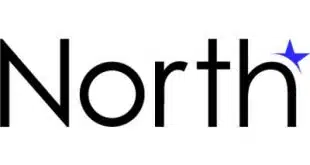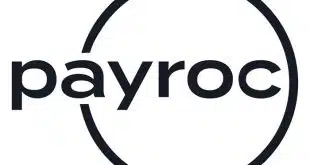Acquiring
From ISOs to ISVs, the players that put solutions packages together for merchants are learning that working together comes with costs and benefits. The trick is figuring out which outweighs the other.
Nothing like a $1.65 billion acquisition to drive home how important independent software vendors and value-add resellers have become to the merchant-services industry.
That’s how much payment processor Vantiv Corp. paid in 2014 for independent sales organization Mercury Payment Systems. It was one of several high-value acquisitions payments-industry companies completed to better secure links to ISVs and VARs.
ISVs develop business-management software and VARs sell this software, along with computers that operate the software, to merchants. And in recent years they have become a valuable customer-acquisition channel for payments companies, one with many benefits and a few challenges.
With merchants asking that payments be integrated with other business functions, a number of payments companies are eyeing ISVs as a conduit to merchants. Indeed, merchant acquirer TransFirst Inc. says these developers are vital. “As we start thinking about integrated solutions, our business is shifting to an integrated model,” says John Shlonsky, TransFirst chief executive.
Even PayPal, the payments unit of online marketplace eBay Inc., is courting developers to integrate PayPal acceptance into their software. It launched a campaign in the second quarter of 2014 to recruit software developers and companies that sell their wares.
‘A Layer of Tech Companies’
Merchants acquired via ISVs and VARs are attractive to payments companies for many reasons. Merchants tend to stay with the provider of their business-management software longer in comparison to how often they switch merchant-services providers.
Also, more merchants are expected to use business-management software, especially as cloud-based systems develop and bring costs down. “As small and mid-sized merchants increasingly migrate from traditional terminal-based solutions towards more feature-rich, integrated payment technology at the point of sale, our investment in an integrated payment channel will allow us to benefit from this trend,” Charles Drucker, Vantiv president and chief executive, said last year during a conference call with analysts.
And the sales pitch for business-management software often skews toward functionality specific to the industry, sometimes relegating price to a secondary consideration.
Payment processor Global Payments Inc. made a strong investment in serving merchants via the point-of-sale system channel with its January 2014 acquisition of Payment Processing Inc., an ISO known as PayPros, which specialized in developing payment features others can incorporate into their software.
That acquisition, coupled with its 2012 deal to buy Accelerated Payment Technologies Inc., fortified the Atlanta-based processor’s intention to nurture sales from the POS-system industry.
“Gone are the days when we would have ‘feet-on-the-street’ selling merchant accounts door-to-door, and essentially recruiting merchants on one or two feature sets, and mostly leading on price,” says Sid Singh, senior vice president and general manager of OpenEdge, the new name for Global’s division that includes PayPros and Accelerated Payment Technologies.
Singh continues: “Fast forward to today. What’s become very clear is there’s a layer of technology companies that power the business operations of merchants. Over the last 10 years, companies like APT and PayPros have become tremendously successful in attracting ISVs.” Singh says OpenEdge has more than 2,000 ISV partners.
‘It’s Not About a Terminal’
That change has led to a two-pronged approach to selling payment services to merchants that use business-management software.
The first step is to make a sales pitch to the ISV or VAR, Singh says. At Global Payments, that pitch involves how the company’s suite of OpenEdge products differs from competitors, he says.
“To be able to be successful [in winning] these ISVs and others, you need a strategic point of view of where payments is headed, you need a robust payments-technology infrastructure, and you need to agree on what the partnership will look like,” says Singh.
Once that relationship is secure, the second step kicks in: The payments company needs to devise a pitch for merchants. “It’s not about a terminal,” Singh says. “The pitch is along the lines of advisement, that using the integrated-payments feature of the software potentially could render operational savings.”
To do that effectively, sales representatives must be well-versed in the software developer’s program, Singh says. “You need to have the conversation like, ‘Did you know you can do A, B, and C on that screen.’ That requires a fair amount of support, training, and coordination with the partner.”
Clouded Issues
But the burgeoning reliance on ISVs and VARs to help sell payments processing comes at an often overlooked cost, argue some observers. One big consideration is that the relationship may favor the ISV or VAR, not the ISO or processor.
“The [integrated-software] channel has gone from a value-add to a must-have,” says Adil Moussa, principal at payments consultancy Adil Consulting, Omaha, Neb. “So much so that VARs and ISVs are now in a position to demand a larger share of the pie in revenue sharing.”
That’s a marked change for the payments industry. “Since the merchant is signing up with the ISV, it puts the ISV in a position of power,” Moussa says. “The acquirer is relegated to the role of back-office processing.”
But, while that may be the case in some instances, it’s not universal. And there is a key trump card acquirers can play. In his “Merchant Acquiring in 2014: Issues, Trends & Perspectives” report, Moussa says that “software developers are still at the mercy of their acquiring partners that would reject merchants under their underwriting rules.”
Then there’s the question of who, exactly, the merchant thinks he’s dealing with, the processor or the system seller. Here, too, the issue is clouded. While some merchants may view the POS software vendor or reseller as their primary point of contact for all issues, even payment ones, that’s not always the case, says Jeff Riley, chief executive of Dinerware Inc., a Seattle-based POS-system developer that specializes in the restaurant industry.
“It varies,” Riley says, adding it’s “always been confusing to the merchant” which provider was the primary contact. Many, however, assume whichever salesperson they deal with most often is the primary contact, he says.
And there is the issue of which provider owns the merchant account. While there could be POS-system developers and resellers that own the merchant’s payment-processing contract, that’s not normally the case, says Riley, who is a member of the Retail Solutions Providers Association, a Charlotte, N.C.-based trade organization for retail software developers.
But that could change, he says. A software developer might start off with a referral deal with an ISO or acquirer only to get savvier at understanding interchange and the value of becoming an ISO itself, Riley says.
POS-system developers can learn a lot from merchant-services companies, Riley says. For example, valuing a merchant-services portfolio is more transparent than putting a dollar figure on a POS-system developer’s roster of clients, he says.
The POS-system vendor has no way to defend a valuation of its customer because the terms under which it’s selling its product, along with its projected residual stream, is very nebulous, Riley says.
“The payments industry can offer guidance on how to build a more valuable and transparent business model from the perspective of an exit plan,” Riley says. “Because the payments industry has defined channels of distribution, there is a big opportunity for the POS-system industry.”
Dinerware, for example, started a rental program in 2008—partially as a result of the Great Recession when merchant financing was squeezed—that 60% of its new customers participate in, Riley says. And about one-third of Dinerware’s existing direct-sales clients rent the service. Now the company has something to show prospective investors that has residual revenue like a merchant portfolio in the payments industry, he says.
Another POS-system developer recognized that opportunity a few years ago. It not only emulated an ISO, it became one.
Mindbody, a San Luis Obispo, Calif.-based company that sells business-management software for the health and beauty businesses, converted to an ISO in 2010. In 2013, it renewed its agreement with TransFirst.
TransFirst at the time said the deal produced more than 500 merchant accounts a month, with expectations that the tally would increase. In 2014, Mindbody added international payment gateway Adyen to its inventory of payment services, expanding its payment acceptance to more than 35 European nations.
‘It Never Goes Away’
Pricing, of course, is a constant element of any payment company’s sales pitch, even with ISVs and VARs. “It never goes away,” says Singh.
But that doesn’t mean it has to be a primary topic of conversation. Integration with POS-system developers affects the sales pitch. Rather than leading off with pricing, the benefits and features of the software become the primary talking point, Singh says.
For example, when selling a POS system to a dental practice, the sales agent might notice that the current office setup has a separate terminal for payments, which demands that someone spend a lot of time reconciling payments between the terminal and the office-management system, Singh says.
The agent’s pitch could be that by using business-management software with an embedded payments module, the manager could save time by automating the reconciliation and using one system for all the other needs of a medical practice.
Such an approach also may alleviate concerns over price-centered sales pitches. “Our conversation is we’re going to give you more value and enable technology-based payments, which includes additional features and services,” Singh says.
Of course, this sales pitch is more involved. The sales agent must have enough knowledge to discuss the software. And now there’s the likelihood of having to share revenue with the ISV or VAR. Add all that up, and the cost of acquisition for an integrated-software merchant may be higher than it is for a merchant that buys just processing services.
But, as Singh suggests, payments companies should look at the overall value of the merchant for its expected longer tenure as a client. “While there is some increase in the cost of acquisition compared with a feet-on-the-street [acquired] merchant, it gets amortized over a longer time that the merchant stays with is,” he says.
Factors that affect the cost of acquisition, such as merchant attrition, have an impact on the POS developer community, too. As far back as 2005, Riley saw the payments industry contend with pricing commoditization. Dinerware clients would inquire if a payment processor was supported, eventually leading Dinerware to establish several deals with firms like Chase Paymentech, Harbortouch, Heartland Payment Systems, and Mercury Payment Systems.
‘We Also Have the Cost’
Working with payments companies is beneficial, Riley says, though there are downsides.
“The bigger challenge is we just want to develop great software,” he says. “Payments should just be a part of that. It shouldn’t be something we invest a significant amount of our development team on.” Still, he estimates that about 25% of Dinerware’s development budget is spent on payments-integration efforts.
“It’s hard to wade through the many different partner options,” he says. “We have the business-development opportunity, and we also have the cost.”




